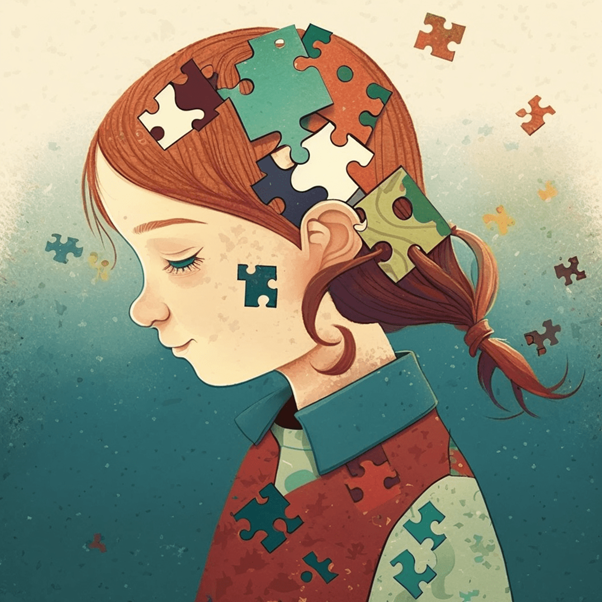It is pretty well known that from research and data gathered over the years, that in general there are less girls than boys that are diagnosed with Autism Spectrum Disorder (ASD). In the past prevalence of ASD in males compared to females has ranged anywhere from 2:1 to 16:1. Today, as there continues to be more understanding around ASD, especially in girls, there are more females receiving a diagnosis, but despite this there are still many who are mis-diagnosed, or they receive a diagnosis much later on in life. The below information gives a little bit more insight into some key indicators to look for in girls when considering an ASD diagnosis, as the presentation can be much more subtle or there may be other diagnoses/explanations given to the female’s experiences and behaviour.
| Area | Characteristics/Markers of ASD in Females |
| Play | -
Play well with adults/parents/older children who may initiate the play, but when interacting with same aged peers this is much more challenging -
Rich and elaborate fantasy or dream world rather than repetitive play, or just realistic play/behaviors -
Engage in behaviors such as playing ‘mum or teacher’ – but this may be to dissect others behavior in order to understand it -
What, on first glance, looks like pretend play – may actually be actions that are copied from older siblings or adults -
May prefer/gravitate towards semi-structured activities (e.g. hop scotch and skipping), which makes social time easier for autistic girls as these games/activities have set rules and ways to participate -
They may play with the same toys as other children but the play itself might be different. For example, they may line up toys or arrange them according to size, colour or other structural categories. Or, they may spend time 'setting up' play (e.g. furniture in a doll’s house) rather than actually playing as they are unsure of what to actually do/how to play |
| Social Skills & Relationships | -
Might obsess over a friend or have imaginary friends -
Might withdraw if a desired friendship is not mutual or exclusive – can develop a friendship but sustaining it is very challenging -
‘Little psychologists’ – hugely interested in understanding how people work as they are unsure and struggling to pick up on more subtle cues -
May exhibit social normative behaviour from copying, from a desire to blend in and/or a desire to be accepted -
Natural social play in girls often hides potential differences between neurotypical girls and those with autism, this is because female social groups are often quite fluid, which enables autistic girls to look as if they are more involved in the social interactions than they actually are -
May use the right gesture at the right time, but these gestures are 'borrowed' from a lifetime of observing and mimicking others -
Can enjoy being the ‘helper’, but often take it too far, and can become ‘bossy’, rude, ‘dob’ on others, or be disrespectful -
No obvious difficulties noticed by school or daycare staff, so child is not referred for an assessment – they often fly ‘below the radar’ |
| Interests & Repetitive Behaviors | -
They will often have the same interests as their peers (e.g. animals, musicians, dolls) so can appear developmentally typical – however, the intensity of these interests may be higher than for their peers -
They can have a strong desire for perfectionism in various areas of their lives |
| Emotional Regulation | -
When frustrated may withdraw, cry, appear moody or opt for selective mutism rather than be outwardly angry or frustrated at those around them -
Have awareness of emotions, and what others might be feeling, but struggled to relate this to themselves and be in tune to what they experience and how to manage their feelings |
It is important to note that there has been no reported difference in sensory processing between boys and girls experiencing ASD.
Here are some helpful resources to further understand ASD in women and girls:
https://www.kennedykrieger.org/stories/interactive-autism-network-ian/girls-autism-hiding-plain-sight?utm_source=iancommunity.org&utm_medium=redirect&utm_campaign=iancommunity.org-article
https://online.simmons.edu/blog/interventions-girls-women-autism-spectrum/
